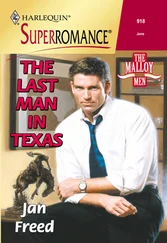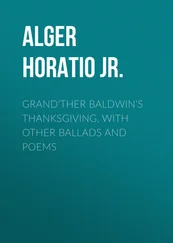That attitude worked equally well when McClay began taking Leo into schools and juvenile detention facilities so kids could see that pit bulls, even those from Michael Vick’s vicious pack, were not salivating monsters but kind and friendly animals that deserved better treatment. She also began working with shelters on their evaluation procedures.
Of course Leo didn’t know or care about any of that. Once his work was done all he wanted to do was go home and play. He would often run, awkward and lumbering, into the living room, jump on the couch, then roll off and flail on the ground as if he’d been traumatized. The other dogs would jump on top of him, and the four of them would end up rolling around in a pile of legs and tails. It was his favorite game.
IT WAS ONE OF the first warm days of spring, when it seems as if all at once flowers have started to bloom, birds have returned to the trees, and the sun generates a replica of the heat that portends summer. After her husband and children were out of the house-off to work and school and preschool-Catalina Stirling walked down creaky steps to the basement.
She opened the door to the dog room, and, as always, found Jasmine sitting in her crate, staring out, motionless. The bowl she had put down earlier was now empty and although the dog showed no signs of wanting to go out, Stirling knew she was ready.
Catalina approached the crate, talking softly as she always did. She reached inside and hooked Jasmine under the front shoulders, sliding her out and lifting all thirty-five pounds of her off the ground. She cradled the dog next to her body and stood for just a moment, holding her, bouncing her a little, whispering soft wishes into Jasmine’s ear. Catalina had always loved that name. She’d often thought that if she had another child and it was a girl, she’d name it Jasmine. It was another one of those coincidences, those instinctive markers that pulled her toward the dog.
Jasmine, as always, went stiff in Catalina’s arms, eyes closed. Catalina appreciated that, as well. She too liked to close her eyes and shut out the world when she had problems. She was sure Jasmine had developed this technique to survive, but Catalina could only guess at the hardships she had endured. She could only guess at where Jasmine went during those times. What dreams did she dream? What happy memories did she relive? Did she have any?
Out in the yard, Catalina placed Jasmine on the ground, then moved away. Jasmine got up and took care of her business while Catalina brought out the other dogs. The three of them ran and explored in the yard. The visible change in Jasmine during these sessions with the other dogs amazed Catalina. What Jasmine usually did was closer to crawling than walking. Her legs were never really straight and her belly was maybe six inches off the ground. Her tail was tucked between her legs, her head ducked. And she twitched and flinched at everything, like a shell-shocked soldier walking through a library of falling books.
But when she played in the yard with the other dogs, she looked like a different creature, like a normal dog. She stood high, she ran and jumped, and the tension left her body. Catalina would watch her from the deck or the back window at such times, and it gave her pleasure to see Jasmine enjoying herself. It inspired her as well; she knew there was a happy dog inside Jasmine. Catalina simply had to find a way to get her out.
She decided it was time to try something new. Catalina grabbed the leashes and went into the yard. She leashed up Rogue and Sophie and held them in one hand, then grabbed Jasmine’s leash, which was dragging on the ground behind her, in the other hand, as she did each night when they took their little walks around the yard. This time though, they didn’t stick to the usual routine.
Catalina swung open the gate in the fence. A wide world yawned before them, with houses and cars and a previously unseen collection of trees and sidewalks and mailboxes. Jasmine took it in. She looked uncertain, but the other dogs pulled forward and Catalina went with them. Jasmine let the slack in her leash play out, but before it became tight she started forward, through the gate and out of the yard.
Catalina didn’t know what would happen or how long this sojourn would last but she felt her heart speed up. She could hardly believe that Jasmine had come this far. They reached the top of the yard and turned up the sidewalk. That’s when the trip screeched to a halt.
The walk didn’t end, but Jasmine suddenly had to sniff everything. Every leaf, every bush, every trunk and flower, every, it seemed, blade of grass. Covering ten feet took minutes. A whole new world was opening up to Jasmine and she was diving in with both nostrils. This blew Catalina away. She never imagined the day would turn out like this. Jasmine was showing such courage and doing so well, Catalina’s heart swelled with pride and love.
Even more than the excursion, Catalina was encouraged by Jasmine’s body language. As she had been in the yard, Jasmine was relaxed and steady. She held herself like a regular confident dog and explored whatever caught her curiosity. It was as if she had become so distracted by the new and interesting things around her that she forgot who she was. She forgot where she came from. She forgot to be scared and insecure.
At the same time, Catalina couldn’t help but remember where Jasmine had come from.

About a week later the doorbell rang and Catalina opened her house to Nancy Williams, a certified animal behaviorist. Life had not changed that much in the wake of Jasmine’s breakthrough, but Catalina was determined to push on and she hoped Williams could jump-start the process. The off-property walks had become a regular event, and Jasmine seemed to look forward to them. Each time, she underwent the metamorphosis from twitching fearball to regular dog, sniffing and exploring with delight.
In other ways Jasmine was unchanged. When the group returned home after that first walk, Jasmine had gone directly to the basement and right back into her crate. She still refused to eat with anyone else in the room. Still refused to walk from the basement to the backyard on her own and still struggled with thresholds, going from one room to another or inside to out. She still refused to let anyone pet her.
This was life with Jasmine. For every moment of soaring joy and encouragement there were two instances of heartbreak and sadness. Catalina had started with the belief that given a stable, loving environment any dog could be rehabilitated, but now she realized that Jasmine would never be a “normal” dog. She would never be “adoptable.” It was, as she reconsidered it, an unrealistic goal. It didn’t matter, though, because Catalina also knew more than ever that Jasmine did have some joy in her life and she had the potential for more. That possibility made it all worthwhile and drove her on.
After talking it over with Davor-a software engineer who would have been happy with one dog but understood his wife’s need to connect with animals-Catalina decided that she would keep Jasmine for good. She would do whatever she could to let the dog enjoy as much as possible of her life. The truth was, Catalina got something out of the arrangement herself. The bond she had with Jasmine had begun to feel the same as those she had with her children. It gave Catalina a level of commitment and a clarity of purpose she felt as though she had been missing.
Catalina stuck to her program. The feedings, the carrying, the play sessions in the yard, the walks, the after-dinner quiet time with music. As expected, Jasmine was terrified around Williams, but from what the behaviorist could observe and what Catalina told her, Williams determined that it was time to work with the third area of motivation-the food drive. Catalina had done well using the companionship drive to make some progress, but Williams could see that there was untapped potential to draw Jasmine through food.
Читать дальше













